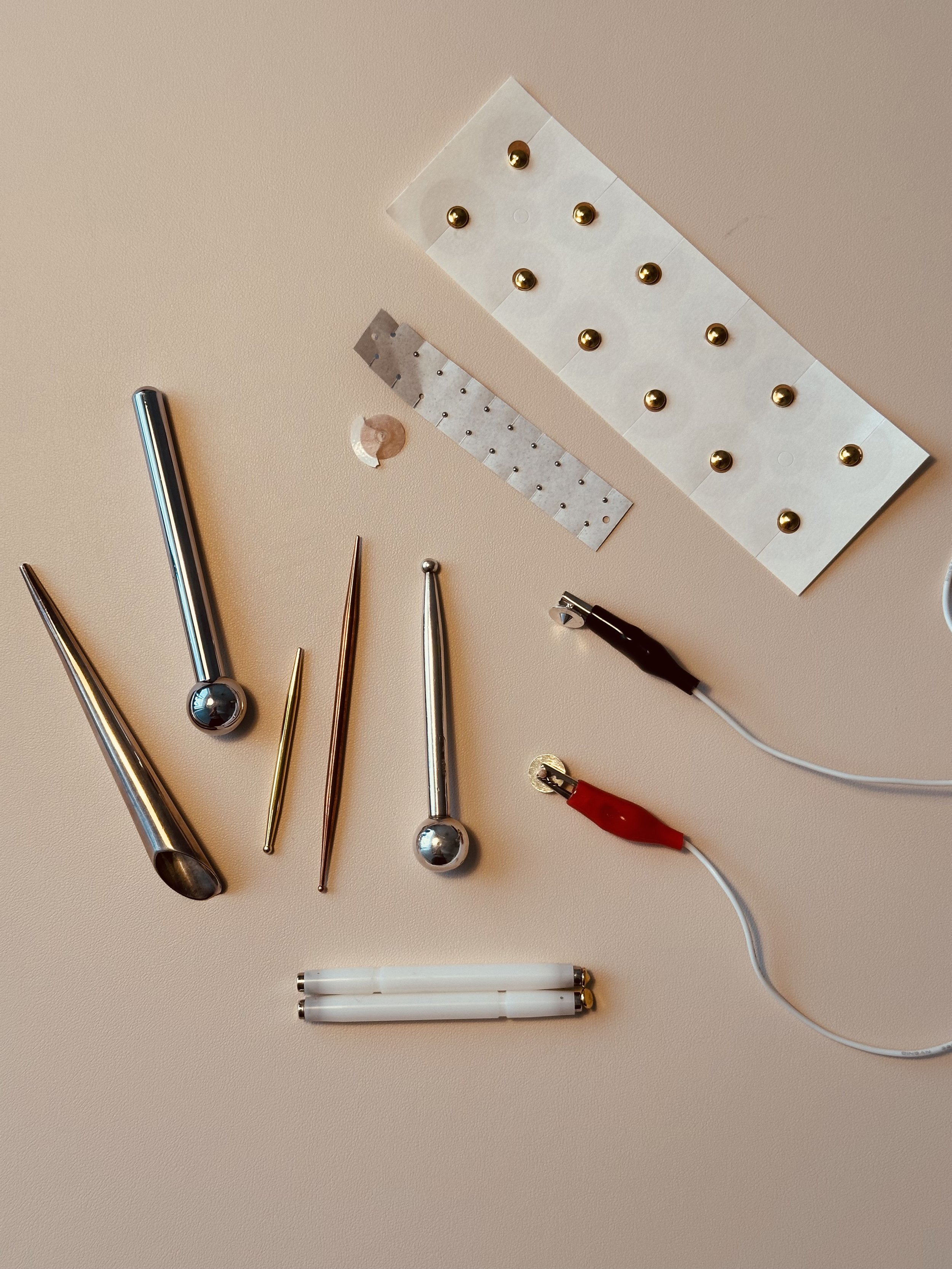
Acupuncture Healing Therapies
Your Acupuncture Session
Depending on what we are treating, your session may involve a mix of Acupuncture techniques, including:
Japanese Acupuncture (Meridian Therapy and Polarity Therapy)
Inserted Acupuncture needles
Cupping
Moxibustion & TPD infra-red heat therapy
Ear Acupuncture, Magnets and leave-in point stimulators.
Scroll down for more information
Acupuncture
Needles (approximately 0.16 thickness) are inserted into Acu-points and retained for 5-20 minutes, promoting deep relaxation and triggering the body’s self-healing mechanisms. This process stimulates the body’s natural ability to restore balance and well-being, making it an effective method for addressing various physical and emotional conditions. The gentle insertion of the needles encourages the release of endorphins and enhances circulation, leading to improved energy flow and overall health.
Japanese Acupuncture
Japanese Acupuncture techniques are characterised by their gentle approach, utilising both needles and specialised tools to effectively stimulate Acu-points and various regions of the body. The selection of points is primarily based on palpation, incorporating methods such as pulse diagnosis and abdominal examination (Hara), alongside evaluation of other areas.
Treatments can be entirely needle-free, which makes them ideal for children, sensitive individuals, and those who may feel apprehensive about the insertion of needles. This flexibility ensures that patients can receive effective care tailored to their comfort levels.
During your sessions, you can expect to experience a thoughtful blend of both needle and needle-free Acupuncture techniques, allowing for a holistic and personalized treatment experience that caters to your specific needs and preferences.
Moxibustion and Cupping.
Moxibustion is an ancient technique of burning moxa, made from refined Mugwort leaves, on or close to Acu-points. The heat is warming and soothing, promoting circulation and stimulating the body’s self-healing mechanisms. Ceda uses a smoke-free Moxibustion device or rice-grain Moxa, which creates less smoke (it smells like incense).
When heat needs to be applied to a larger area, Ceda uses an infra-red TPD heat lamp. TPD lamps heat a ceramic plate, embedded with minerals, emitting infra-red similar to that emitted by the human body. Lying under the infra-red heat lamp is deeply relaxing, comforting and energising.
Cupping is a technique that was prevalent in many cultures throughout the world, including China, Egypt, Greece and the Middle East.
The Cups are placed on the body and either left for around 3 minutes, or moved up and down the area. The cupping will be gentle, but will occasionally cause light ‘bruising’. The cups move fluid, stretch the fascia and move blood through tight muscles to help them to relax.
Other techniques like Gua Sha, Electro-Acupuncture, LED and full-spectrum Light Therapy may also be used during your session.
How does Acupuncture work?
The Acupuncture meridian system is a map of the circulation of Qi-energy-vitality within the body. When stimulated, the Acu-points trigger the body’s self-healing mechanisms. Your practitioner will look at your symptoms and signs (pulse, tongue, palpation) to develop an understanding of the Acupuncture healing strategies that may assist your condition.
Much research has been done into the mechanism of Acupuncture from a neuro-biological perspective. Studies have explored the effect of Acupuncture on the Autonomic nervous system (ANS), balancing the Sympathetic and Parasympathetic branches of the ANS, contributing to the relaxation response, and regulating Heart-Rate Variability. Acupuncture may influence the function of nerves (both peripherally, and at the brain and spinal cord level), release the body’s natural pain relieving substances, the endorphins, is anti-inflammatory, modulates neurotransmitters and modulates the immune system.
Read more on the developing science here






